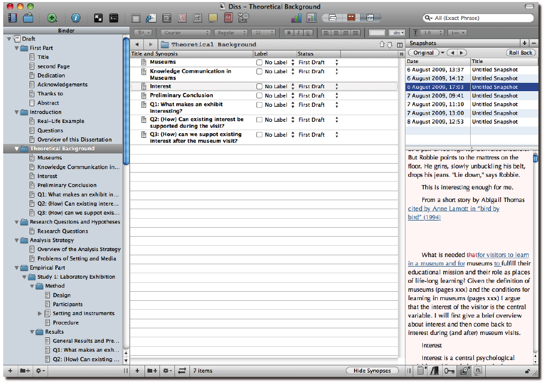“I am careful not to confuse excellence with perfection. Excellence I can reach for; perfection is God’s business.”
Michael J. Fox
There is no perfection in written texts
One of the most devastating mistakes in writing is to strive for perfection. Some even desire to achieve perfection with their first draft.
Writing does not work this way, hell, it can never work this way.
After all, what is “perfection”? A perfect text would be the “ideal”, “best written”, “most useful” text a person has ever read. That would be hard to impossible if it were only one person. But most text are read by more than one person. If you have two advisers there are at least three people for whom the text has to be perfect — for you, for adviser one, and for adviser two. There is no way a text can be perfect for more than one person, especially not in academia where people have idiosyncratic backgrounds.
So, first, accept that your text will never be “perfect”.
Then commit to writing an excellent text.
Excellent Writing is Re-Writing
Do not expect to write an excellent text with the first draft. Unless you are very skilled and know your audience that is nearly impossible to achieve. Instead, allow yourself to write what Lamott called “a shitty first draft”. Get your thoughts on the paper to allow others to give feedback on your thoughts, the structure, the ideas, the merit of the work. Then use that feedback to first improve the thoughts, structure, ideas and merit of the work. The wording and the quality of the writing itself comes later.
To be clear: You need feedback in writing and unless you have written it down, you will not be able to get it. So write that “shitty first draft”. Then revise — the second draft will be good, the third one will be excellent.
Read your text on another medium
You will experience a certain blindness when reading your text over and over. You know what should be written there — which will prevent you from reading what is actually written there. So print out your text, use another font, another paper size, read it aloud — do anything to keep the reading experience fresh for you. Otherwise you will miss mistakes in your writing.
Keep the old versions
One of the reasons I really love Scrivener is its ability to keep old versions of the text easily available. You can make snapshots of the text and these are stored in the file. You can have a look at them anytime you want to and copy & paste from them or revert to them. Much, much better than anything Word can offer.

And you should have your old versions available, because much too often you will find that you really need that sentence you had three revisions ago — or your adviser asks you to go back to a previous version. With Scrivener this is actually pretty easy.
Recommended Literature
There is a lot of good literature on writing. Personally, I recommend the following books (see also this posting):
- Silvia, P. J. (2007). How to Write a Lot. Washington D.C.: APA.
Very good book about the more structural issues of writing — how to get down to write. - Alley, M. (1996). The Craft of Scientific Writing (3rd Edition). New York: Springer.
Focuses on the nuts and bolts of writing. Very helpful to see that writing is a craft, not an art. - Thomson, P. & Kamler, B. (2013). Writing for Peer Reviewed Journals. Milton Park, Abingdon, Oxon: Routledge.
The focus is on the discourse community here — it’s a must read for any scientist, especially if you work in a department where there is any doubt about who the community is. - Bem, D. J. (1987). Writing the empirical journal article. In M. P. Zanna & J. M. Darley (Eds.). The compleat academic: A practical guide for the beginning social scientist (pp. 171-201). New York: Random House.
Not uncontroversial, but an interesting take on writing in psychology. - Yaffe, P. (2009). How to Generate Reader Interest in What You Write. ACM Ubiquity, 10(7).
Some interesting thoughts on stimulating interest. - Lamott’s “bird by bird”: Lamott, A. (1994). bird by bird. New York: Anchor Books.
The focus is on fictional writing, but still, some very good ideas in this book, esp. to have the courage to write “a shitty first draft”. - Tufte (diverse Bücher)
Tufte did write a couple of books on information visualization — very well worth reading if you need to visualize data.
Happy re-writing 🙂